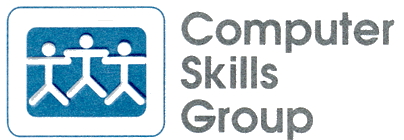

You hear about people building their own web pages, or entire web sites, all the time. Is this something you might want to do? I can suggest several reasons why you might. First the easy one - you might want to do this just for fun (some people think this is fun - really, they do!). Okay, how about more practical reasons? Let's say you have a small business and you need to have a web site for it. You're happy to pay a professional to build the web site initially, but you'd rather not have to pay to have your company news page changed every month.
No matter whether you need to learn a little or a lot about web pages, this week's tip is about getting started on the right foot. You CAN do this but, as with many things we try in life, a little guidance at the start can save a lot of struggle later on.
I'll make three recommendations here.
First, here's some background about creating a web page -
Web pages are like Word documents. Even though lots of people don't follow this sequence, creating a Word document is actually designed to be a two step process:
I'm splitting hairs here but technically speaking, HTML is not a programming language. Instead of using programming "commands", HTML uses what are known a "tags". These tags are imbedded in the actual text and are identified by being enclosed in angle brackets
. . . like this: <tag>
Here's a full example -
To cause part of a sentence to be underlined
. . . you would add these two tags: <u>words to be underlined</u>
. . . to get this result: words to be underlined
In the above example, the "u" stands for "underline". Other tag letters are pretty easy to remember too. For example,
Is there a practical reason I might want to know about this?
So now that you have the idea about how it works, you can make an informed decision. Learn a little about HTML and you can maintain the monthly changes to the text of your web site. Learn more and you can build fancy web pages and more complex web sites. Maybe you'll decide it just isn't for you, but if you do decide to give it a shot, here are three recommendations about getting started.
Recommendation #1 - Buy a great manual -
Just reading this bulletin, you've already learned a little about using HTML. There is much more to learn of course. You will save yourself a LOT of trouble by getting a really good book on the subject. I've looked at many and I give this one my highest recommendation. It's called:
The format and organization of this book are just plain superior. It covers more than you will need to know to build or maintain a web page, but in a very understandable way. Chapters are short (two or three pages each) and cover a specific topic. Actual examples are everywhere, with the sections of the example circled so that you are never wondering which part of the text they are talking about. If you are about to tackle HTML, just go buy this book.
Recommendation #2 - It's worth it to learn HTML basics first -
Here's the thing on this one. You can go out right away and get a software program which will generate HTML tags for you. In fact, I'm about to tell you where you can get a great program that does just that. However, if you start that way, it will be much harder to later learn how HTML actually works. Instead, experiment with the basics first. Only then will you appreciate what the fancy software tool is doing for you, and why. Even if you have someone develop a professional web page for you, you will still want to have the basic knowledge for maintaining the text of your web site.
Recommendation #3 - Acquire a web page development tool
For an HTML development tool, here's the one I recommend. It's called:
Once you feel confident with the basic elements of HTML, You can move on to using this program to add much more sophisticated features such as frames, tables, lists, fancy graphics, and lots more. HTML Builder XP Version 5.6 Lite has been described as a tool suitable for advanced users and newcomers alike. I agree.
Select some text and click on the format you want to apply. The program generates the starting and ending tags automatically. In fact, nearly anything you can do in HTML can be done in this way. It make the business of page creation and page maintenance very easy. I will tell you this though. As I make revisions to web page text, I often delete a tag inadvertently. This can result in startling changes to the appearance of the page. No development program can find and fix that kind of error for you. You are on your own to figure out what happened. That's not a problem for me, only because I learned the basics first. End of preaching!